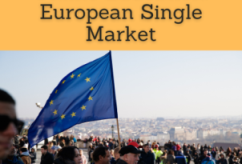Business in Malta, Valletta, Marine Transport
Maltese Foreign Trade. Malta: strategic position between Europe, Africa

The Republic of Malta has become a crucial Shipping logistics centre, thanks to its strategic position between Europe, North Africa and the Middle East
The Maltese tourism sector (1.7 million tourists) is one of the pillars of the Maltese economy, as well as textile and electronics industry
The Maltese banking sector has experienced strong growth in recent years
- Introduction to the Republic of Malta (EU)
- Maltese Economy: a strategic position between Europe, North of Africa and the Middle East (MENA)
- Doing Business in Valletta
- Maltese International Trade
- Investment in Malta
- Access to the Maltese Market
- Business Plan for Malta

The educational aims of the Subject “Foreign Trade, Logistics and Business in Malta” are:
- To analyze the Maltese Economy, Logistics and Global Trade
- To conduct research on business opportunities in the Maltese Market
- To research the trade relations of Malta with the student's country
- To learn about Maltese free trade agreements as a member of the European Union
- To develop a business plan for the Maltese Market

The Subject “Foreign Trade, Logistics and Business in Malta” is included within the curriculum of the following academic programs at EENI Global Business School:

Masters: International Business, Foreign Trade.

Languages:  +
+  Malta
Malta  Malte
Malte  Malta.
Malta.
- Subject Credits “Doing Business in Malta”: 1

International Trade, Logistics and Business in Malta


Maltese Preferential Access and Trade Agreements:
- Malta and the European Economic Area
- European Union
- European Customs Union
- European Single Market
- The European Union Services Directive
- European Digital Single Market
- As a member of EU, Malta is a beneficiary of EU Trade Agreements


- World Trade Organization (WTO)
- Agreement on Trade in Services (GATS)
- Agreement on Sanitary Measures
- Agreement on Technical Barriers to Trade
- Agreement on Preshipment Inspection
- Agreement on Safeguards
- Trade Facilitation Agreement
- World Customs Organization (WCO)
- Kyoto Convention
- International Chamber of Commerce
- BIC
- Chicago Convention (ICAO)
- International Maritime Organization (IMO)
- Convention for Safe Containers
- Istanbul Convention
- International Road Transport Union (IRU)
- TIR Convention
- Guidelines on Safe Load Securing for Road Transport
- Customs Convention on Containers - not a member

European Organizations:
- The European Union
- Organization for Security and Cooperation in Europe (OSCE)
- Economic Commission for Europe (UNECE)

- United Nations
- World Bank
- World Trade Organization (WTO)
- International Monetary Fund
- Asia-Europe Meeting
- Capital of Malta: Valletta
- Official Language: Maltese and English
- Maltese Area: 316 km²
- Maltese Population: 423,282 million people (the highest population density in the EU)
- Type of Government of Malta: Parliamentary Republic
- Malta is an island country. Nearest countries: Tunisia, Libya and Italy
- Independence of Malta: 1964 (United Kingdom)
Religion in Malta: Catholicism (Christianity).
Malta belongs to the European Economic Area.
Economy of Malta.
- Malta is considered as an advanced economy by the World Bank
- Malta is considered the 15th most democratic country in the world (Economist Intelligence Unit, Democracy Index)
- Maltese Currency: Euro (2008)
- Malta is a member of EU since 2004
- Malta has one of the lowest tax systems in the EU
- Headquarters of the European Asylum Support Office (EASO)

Maltese Foreign Trade.
- Foreign Trade is key for Malta
- Main Maltese Export are machinery, fuels, pharmaceutical products, books, aircraft, toys and sports equipment
- Top Maltese exports destinations: Germany (18%), Libya, France, the UK, Italy
- Main Maltese Imports are fuels, electrical machinery, aircraft, machinery, semi-manufactured products, vehicles
- Main suppliers of Malta are Italy (19%), the UK, Germany, France, China, Greece, Spain
- As a member of EU, Malta is a beneficiary of EU trade agreements with ASEAN, Egypt, Jordan, Lebanon, Ukraine, Moldova, Georgia...
(c) EENI Global Business School (1995-2025)
Top of this page









 WhatsApp
WhatsApp